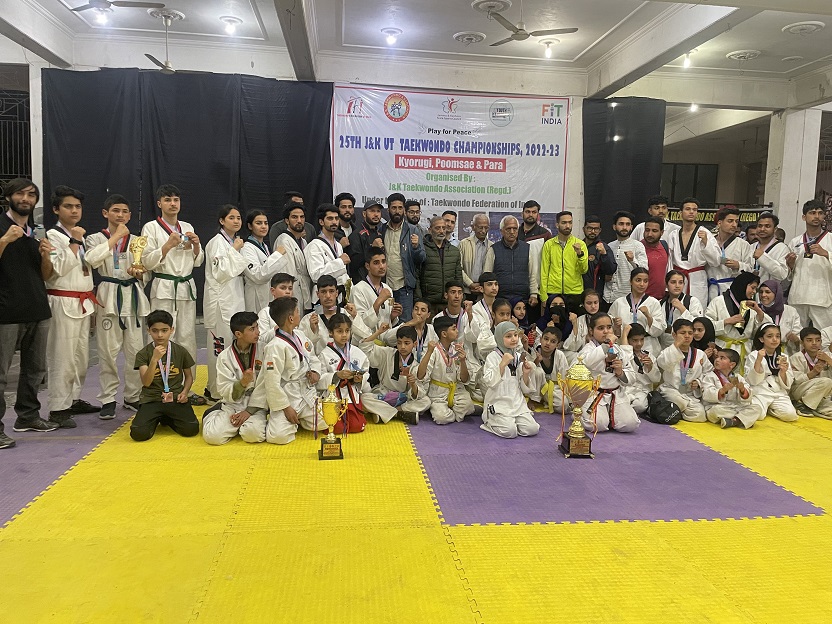
By Mukhtar Ahmad Farooqi
EMERGENCE of various Digital Technologies are transforming the world around us as was the case with urbanisation and globalisation. Advent of technology has turned the world into a global village and empowered the individuals with quick transmission of data and information. At the same time, the increase in the number of people accessing the internet worldwide due to the advancements in the communication technologies and improved economic avenues especially in remote areas made it possible for children to use digital tools and services meant for engaging, learning and connecting to the world around them. As a result of infiltration of various digital technologies, there has been drastic change in the ways people work, learn and communicate thereby transforming our lives in the 21st century. Consequently, businesses are becoming more efficient, products are becoming more accessible, and people are becoming more connected. Covid-19 pandemic and subsequent restrictions have increased children’s reliance on the internet, more specifically mobile devices. Children couldn’t be contained in this digital age and have become avid internet users making use of a multitude of ICT tools. The growing presence of technology in children’s lives is a double-edged sword and the type of impact in their lives depends upon how children are exposed to them. This increase in online activity has given rise to a number of challenges for parents and educators. With children spending more time on the internet than ever before, it is essential that we understand how to protect them from potential risks while also helping them make use of the numerous benefits offered by ICT tools in a responsible manner.
We all believe in the power of internet and how its innovations are playing an increasingly intrusive role in our lives as the economy, education, entertainment, work and even family moved from analog worlds to digital world where everyone works within one’s screen. As technology advances, the power of the internet is becoming even more pervasive in our lives. We are now able to access information and resources that were previously unimaginable, allowing us to make better decisions and enjoy greater convenience. From AI-powered ChatBots that can answer customer inquiries to virtual reality applications that give us a glimpse of other worlds, the power of the internet is undeniable and its innovations are changing our lives for good. At the same time, it has developed an irresistible attraction among us towards screens due to which we are unable to control our emotions and actions.
We cannot deny the fact that digital instruments are useful, both for communication and for information if used judiciously. From emails to video calls, from online databases to cloud storage, digital technology has made it easier than ever before to stay connected with people and access relevant data quickly. Technology came to revolutionize the world almost entirely and socialisation was no exception. Socialising in digital age has become pronounced in the online mode instead of real world. “Conversation centric communication” has been replaced by chats, online meetings through Skype, Zoom etc. which has posed critical challenges to social norms. Hug, the meeting between friends, one on one interactions have been replaced by tagging, comments, likes and emoji’s. Quality of our social interactions is declining day by day and this is where the oft-quoted saying of Albert Einstein comes into play “I fear the day technology will surpass our human interaction and the world will have a generation of idiots’. Social media have turned our relationships reelistic(virtual) in nature because during our get together or outings we remain hooked to our devices texting or surfing online instead of interactions.
This abrupt change resulted in a generational breakdown, giving rise to an increasingly common phenomenon, called Digital Orphans. Digital orphans are those children who are born in the digital world but lack a digital skill set or education. The term ‘Digital Orphan’ was coined by Dr Daniel Miller in 1995 who published his book entitled: “Digital Orphans: Growing Up Without Internet Access”. He defines a digital orphan as someone who has grown up in a world where technology has become accessible to them from birth but they lack the knowledge or skills needed to use these devices appropriately or safely when interacting with others online. The lack of guidance is coming from their parents who aren’t willing or don’t possess proper information about the pros and cons of technologies. They themselves remain immersed in their mobile devices and hence are unable to facilitate discussions with their children about what information they are absorbing from using tech. This can be because they have not been taught about online safety, or their parents themselves haven’t learnt on how to use technology safely. By raising children like this, parents are allowing them to become vulnerable to various threats of using digital space.
Digital orphans are children who have lost their parents to technology. Their parents spend most of the time on their cell phones, both in the presence of their children and at family gatherings. Usually children are considered legal heirs to their parents but a digital heir is somewhat different as far as its context is considered. A person with a great understanding of technology and who has a healthy balance between their life in tech and the real world is known as a “Digital Heir.” A Digital Heir is someone who has the skills to build and modify a website, films, photos etc.We have made our children orphans instead of heirs as far as digital context is concerned, the reasons well known to everyone.
Digital Orphans are at risk of getting involved in cyberbullying and online scams. They may also become victims of identity theft and online predators. This is because they do not know how to protect themselves from being attacked by others on the internet. They don’t know what type of information should be kept private and what should be shared publicly on social media platforms such as Facebook, Instagram, Twitter etc. Children are vulnerable because they remain active in digital space and are heavily influenced by peer pressure. They may also not know how to communicate with people offline in person or over the phone without exposing themselves to unnecessary harm such as cyber bullying or threats that could put them in danger if they don’t pay attention to what is around them while communicating with others. Many parents have no idea how much time their children spend online, or what they’re doing online. They may have no idea where their children get their information from, who they talk to or what they talk about when they’re not around them.
The first step towards solving this problem is by setting clear rules for children when it comes to their use of technology. This includes things like: no cyberbullying, no sexting and no sharing personal information such as names, email addresses or phone numbers. These rules should be reinforced whenever possible until they become second nature for your child so that he/she can react quickly if something happens on social media platforms like Facebook.
Therefore, it becomes imperative to foster digital resilience of children so that they understand what potential risks they likely can encounter while using different online technologies and know when they are at risk. If they encounter such situations especially while using social platforms then they must follow BUSSR (Block, Unfriend, Safe, Screenshot, Report) approach.
A holistic approach is required for realising the benefits of technology for children in a restricted manner where stakeholders like parents and caregivers, educators, government regulators, tech companies, and children themselves are aware about mental health and well-being in all aspects of children’s online engagement. Although there is a role for parental controls and surveillance technology, internal safeguards like empathy, resilience, and values are more effective and benefit children throughout their life, whether they are online or offline.
Parents should educate and encourage children to learn digital citizenship and healthy digital habits so that they become safe, secure, responsible and resilient which means that they learn how to accept good and bad.
Use of technology should be governed in a way that is age appropriate by framing specific regulations and guidelines. School policies should be framed in a manner that promotes positive use of digital technologies, while taking steps to restrict access to harmful content. In this way we will be able to protect children’s rights to privacy.
There’s an oft-quoted Sanskrit saying which means “I know what is right, but feel no inclination to follow it; I know what is wrong but cannot desist from it.” Although, most of the literates and semi-literates have picked up digital literacy skills but due to lack of foresight and engineered distractions we don’t use technology but are rather used by technology.
Views expressed in the article are the author’s own and do not necessarily represent the editorial stance of Kashmir Observer
Follow this link to join our WhatsApp group: Join Now
Be Part of Quality Journalism |
Quality journalism takes a lot of time, money and hard work to produce and despite all the hardships we still do it. Our reporters and editors are working overtime in Kashmir and beyond to cover what you care about, break big stories, and expose injustices that can change lives. Today more people are reading Kashmir Observer than ever, but only a handful are paying while advertising revenues are falling fast. |
| ACT NOW |
| MONTHLY | Rs 100 | |
| YEARLY | Rs 1000 | |
| LIFETIME | Rs 10000 | |










